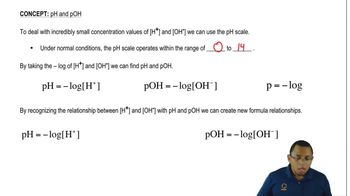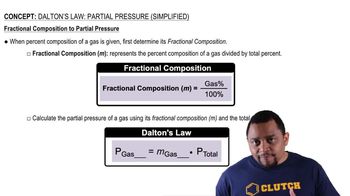Textbook Question
In an acidic solution, how does the concentration of H3O+ compare to the concentration of OH-?
836
views
 Verified step by step guidance
Verified step by step guidance Verified video answer for a similar problem:
Verified video answer for a similar problem:



 1:31m
1:31mMaster The pH Scale Concept 1 with a bite sized video explanation from Jules
Start learning